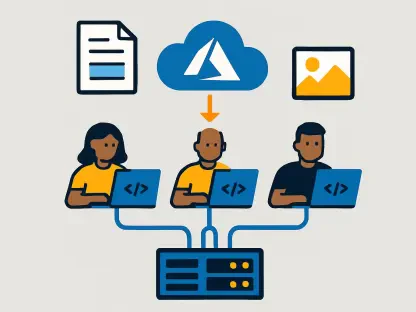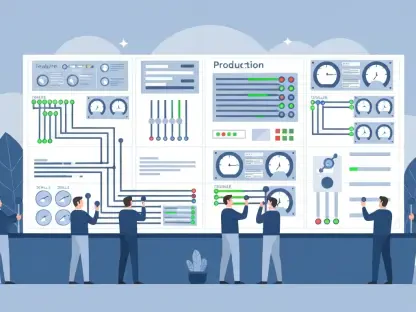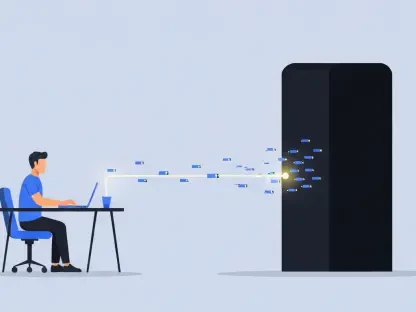I’m thrilled to sit down with Vijay Raina, our esteemed SaaS and Software expert, who brings a wealth of knowledge in enterprise technology and thought leadership in software design and architecture. With a keen eye for integrating cutting-edge tools like AI into design workflows, Vijay offers invaluable insights into how designers and developers can harness AI to elevate their work. In this engaging conversation, we dive into the evolving role of AI in design, the art of crafting effective prompts, and the mindset needed to collaborate with AI as a creative partner. We also explore structured approaches to prompting and the future possibilities of AI-augmented design processes.
How do you see AI shaping the day-to-day tasks of designers in the current landscape?
AI is becoming a game-changer for designers by automating repetitive tasks and providing quick access to inspiration or data synthesis. For instance, it can generate initial drafts of wireframes, suggest color palettes, or summarize user feedback in seconds—tasks that used to take hours. However, it’s not about replacing the designer’s vision but rather enhancing it. AI acts as a tool to handle the grunt work, freeing up time for deeper creative exploration and strategic thinking. I’ve seen designers use AI to brainstorm ideas or iterate on concepts faster, which ultimately boosts productivity and innovation in their daily routines.
What’s your perspective on prompting as a skill for designers working with AI?
Prompting is essentially a design act in itself—it’s about crafting a clear, intentional interaction with a machine. It’s not just typing a quick request; it’s like writing a creative brief for a teammate. A good prompt requires you to define the goal, provide context, and set expectations for the output. Designers are already skilled at communicating intent through briefs or storyboards, so prompting is a natural extension of that. When done well, it transforms AI from a random idea generator into a focused collaborator that aligns with your vision.
How does thinking of AI as a smart intern rather than a co-pilot influence the way you approach working with it?
Viewing AI as a smart intern shifts your mindset from expecting perfection to guiding and shaping its contributions. An intern is eager, quick, and resourceful, but they lack the context and nuanced judgment a seasoned designer has. So, I approach AI with clear instructions, anticipating that I’ll need to review and refine its output. This mindset encourages patience and a hands-on attitude— I’m ready to coach the AI through feedback loops rather than assuming it’ll nail everything on the first try. It’s about managing expectations and leveraging AI’s strengths while compensating for its limitations.
Why is it critical to guide and verify AI outputs rather than accepting them at face value?
AI outputs can be incredibly useful, but they’re not infallible. Without guidance, AI might produce generic or biased results, or even confidently present incorrect information. Verifying its work is crucial because, as designers, we’re responsible for the final product. I’ve had instances where AI summarized user feedback but missed key emotional nuances that only a human eye could catch. By guiding AI with specific constraints and double-checking its suggestions, we ensure the output aligns with user needs and project goals. It’s about maintaining control over the creative process while using AI as a powerful assistant.
What are your thoughts on using a structured framework like WIRE+FRAME to craft prompts for AI?
I think frameworks like WIRE+FRAME are fantastic for bringing discipline to prompting. They break down the process into clear components—defining the AI’s role, providing context, setting rules, and specifying outputs—which mirrors how we structure design briefs. This structure helps eliminate guesswork and ensures the AI delivers relevant, actionable results. I find it particularly useful for complex tasks where clarity is paramount. It’s like creating a blueprint before building; it saves time and reduces frustration by setting a strong foundation for the interaction.
When would you recommend using a basic structure versus a more detailed framework for prompting AI?
A basic structure, like the core WIRE elements, works well for quick, straightforward tasks—think generating a list of ideas or summarizing a short piece of feedback. You don’t need extra layers when the scope is small and stakes are low. However, for intricate projects, like synthesizing user research for a major app update, adding the FRAME components—such as tone, iterative feedback, or task flow—can make a huge difference. It ensures the AI’s output is polished, consistent, and tailored to the project’s needs, reducing the back-and-forth needed to get usable results.
Can you share a memorable experience where a well-crafted prompt significantly improved an AI’s output in a design or software project?
Absolutely. I was once working on a project to improve a SaaS app’s onboarding experience. Initially, I used a vague prompt like, “Suggest ways to improve onboarding.” The AI gave me generic ideas that weren’t specific to our user base. Then, I rewrote the prompt with clear context about our target audience, defined the AI’s role as a UX strategist, and specified the output format to include user journey stages and pain points. The revised output was night and day—it provided detailed, actionable insights with specific examples tied to our data. That experience showed me how much impact a thoughtful prompt can have on the quality of AI assistance.
What’s your forecast for the future of AI in design workflows over the next few years?
I believe AI will become even more integrated into design workflows, evolving from a tool for isolated tasks to a seamless part of the creative ecosystem. We’ll likely see AI assistants that are custom-built for specific design contexts, trained on a team’s unique style and project history. Prompting skills will become a core competency for designers, much like prototyping or user testing is today. Additionally, as AI models grow smarter, I expect them to handle more complex interactions, possibly even anticipating designer needs based on past inputs. It’s an exciting time, and I think we’re just scratching the surface of how AI can amplify creativity and efficiency in design.









